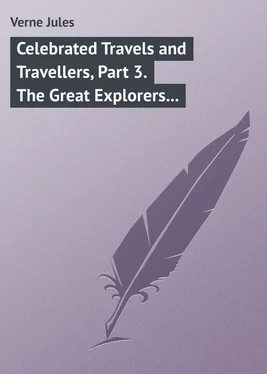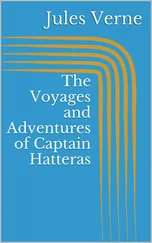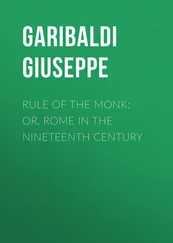Jules Verne - Celebrated Travels and Travellers, Part 3. The Great Explorers of the Nineteenth Century
Здесь есть возможность читать онлайн «Jules Verne - Celebrated Travels and Travellers, Part 3. The Great Explorers of the Nineteenth Century» — ознакомительный отрывок электронной книги совершенно бесплатно, а после прочтения отрывка купить полную версию. В некоторых случаях можно слушать аудио, скачать через торрент в формате fb2 и присутствует краткое содержание. Жанр: foreign_language, foreign_prose, на английском языке. Описание произведения, (предисловие) а так же отзывы посетителей доступны на портале библиотеки ЛибКат.
- Название:Celebrated Travels and Travellers, Part 3. The Great Explorers of the Nineteenth Century
- Автор:
- Жанр:
- Год:неизвестен
- ISBN:нет данных
- Рейтинг книги:5 / 5. Голосов: 1
-
Избранное:Добавить в избранное
- Отзывы:
-
Ваша оценка:
- 100
- 1
- 2
- 3
- 4
- 5
Celebrated Travels and Travellers, Part 3. The Great Explorers of the Nineteenth Century: краткое содержание, описание и аннотация
Предлагаем к чтению аннотацию, описание, краткое содержание или предисловие (зависит от того, что написал сам автор книги «Celebrated Travels and Travellers, Part 3. The Great Explorers of the Nineteenth Century»). Если вы не нашли необходимую информацию о книге — напишите в комментариях, мы постараемся отыскать её.
Celebrated Travels and Travellers, Part 3. The Great Explorers of the Nineteenth Century — читать онлайн ознакомительный отрывок
Ниже представлен текст книги, разбитый по страницам. Система сохранения места последней прочитанной страницы, позволяет с удобством читать онлайн бесплатно книгу «Celebrated Travels and Travellers, Part 3. The Great Explorers of the Nineteenth Century», без необходимости каждый раз заново искать на чём Вы остановились. Поставьте закладку, и сможете в любой момент перейти на страницу, на которой закончили чтение.
Интервал:
Закладка:
The caravan soon left the banks of the Yeou or Gambarou, and entered a wooded country, which was evidently under water in the rainy season.
The travellers then entered the province of Katagoum, where the governor received them with great cordiality, assuring them that their arrival was quite an event to him, as it would be to the Sultan of the Fellatahs, who, like himself, had never before seen an Englishman. He also assured them that they would find all they required in his district, just as at Kouka.
The only thing which seemed to surprise him much, was the fact that his visitors wanted neither slaves, horses, nor silver, and that the sole proof of his friendship they required was permission to collect flowers and plants, and to travel in his country.
According to Clapperton's observations, Katagoum is situated in lat. 12° 17' 11" N., and about 12° E. long. Before the Fellatahs were conquered, it was on the borders of the province of Bornou. It can send into the field 4000 cavalry, and 2000 foot soldiers, armed with bows and arrows, swords and lances. Wheat, and oxen, with slaves, are its chief articles of commerce. The citadel is the strongest the English had seen, except that of Tripoli. Entered by gates which are shut at night, it is defended by two parallel walls, and three dry moats, one inside, one out, and the third between the two walls which are twenty feet high, and ten feet wide at the base. A ruined mosque is the only other object of interest in the town, which consists of mud houses, and contains some seven or eight hundred inhabitants.
There the English for the first time saw cowries used as money. Hitherto native cloth had been the sole medium of exchange.
South of Katagoum is the Yacoba country, called Mouchy by the Mahommedans. According to accounts received by Clapperton, the people of Yacoba, which is shut in by limestone mountains, are cannibals. The Mahommedans, however, who have an intense horror of the "Kaffirs," give no other proof of this accusation than the statement that they have seen human heads and limbs hanging against the walls of the houses.
In Yacoba rises the Yeou, a river which dries up completely in the summer; but, according to the people who live on its banks, rises and falls regularly every week throughout the rainy season.
On the 11th of January, the journey was resumed; but a halt had to be made at Murmur at noon of the same day, as Oudney showed signs of such extreme weakness and exhaustion, that Clapperton feared he could not last through another day. He had been gradually failing ever since they left the mountains of Obarri in Fezzan, where he had inflammation of the throat from sitting in a draught when over-heated.
On the 12th of January, Oudney took a cup of coffee at daybreak, and at his request Clapperton changed camels with him. He then helped him to dress, and leaning on his servant, the doctor left the tent. He was about to attempt to mount his camel, when Clapperton saw death in his face. He supported him back to the tent, where to his intense grief, he expired at once, without a groan or any sign of suffering. Clapperton lost no time in asking the governor's permission to bury his comrade; and this being obtained, he dug a grave for him himself under an old mimosa-tree near one of the gates of the town. After the body had been washed according to the custom of the country, it was wrapped in some of the turban shawls which were to have served as presents on the further journey; the servants carried it to its last resting-place, and Clapperton read the English burial service at the grave. When the ceremony was over, he surrounded the modest resting-place with a wall of earth, to keep off beasts of prey, and had two sheep killed, which he divided amongst the poor.
Thus closed the career of the young naturalist and ship's doctor, Oudney. His terrible malady, whose germs he had brought with him from England, had prevented him from rendering so much service to the expedition as the Government had expected from him, although he never spared himself, declaring that he felt better on the march, than when resting. Knowing that his weakened constitution would not admit of any sustained exertion on his part, he would never damp the ardour of his companions.
After this sad event, Clapperton resumed his journey to Kano, halting successively at Digou, situated in a well-cultivated district, rich in flocks; Katoungora, beyond the province of Katagoum; Zangeia, once – judging from its extent and the ruined walls still standing – an important place, near the end of the Douchi chain of hills; Girkoua, with a finer market-place than that of Tripoli; and Souchwa, surrounded by an imposing earthwork.
Kano, the Chana of Edrisi and other Arab geographers, and the great emporium of the kingdom of Houssa, was reached on the 20th January.
Clapperton tells us that he had hardly entered the gates before his expectations were disappointed; after the brilliant description of the Arabs, he had expected to see a town of vast extent. The houses were a quarter of a mile from the walls, and stood here and there in little groups, separated by large pools of stagnant water. "I might have dispensed with the care I had bestowed on my dress," (he had donned his naval uniform), "for the inhabitants, absorbed in their own affairs, let me pass without remark and never so much as looked at me."
Kano, the capital of the province of that name and one of the chief towns of the Soudan, is situated in N. lat. 12° 0' 19", and E. long. 9° 20'. It contains between thirty and forty thousand inhabitants, of whom the greater number are slaves.
The market, bounded on the east and west by vast reedy swamps, is the haunt of numerous flocks of ducks, storks, and vultures, which act as scavengers to the town. In this market, stocked with all the provisions in use in Africa, beef, mutton, goats' and sometimes even camels' flesh, are sold.
Writing paper of French manufacture, scissors and knives, antimony, tin, red silk, copper bracelets, glass beads, coral, amber, steel rings, silver ornaments, turban shawls, cotton cloths, calico, Moorish habiliments, and many other articles, are exposed for sale in large quantities in the market-place of Kano.
There Clapperton bought for three piastres, an English cotton umbrella from Ghadames. He also visited the slave-market, where the unfortunate human chattels are as carefully examined as volunteers for the navy are by our own inspectors.
The town is very unhealthy, the swamps cutting it in two, and the holes produced by the removal of the earth for building, produce permanent malaria.
It is the fashion at Kano to stain the teeth and limbs with the juice of a plant called gourgi , and with tobacco, which produces a bright red colour. Gouro nuts are chewed, and sometimes even swallowed when mixed with trona , a habit not peculiar to Houssa, for it extends to Bornou, where it is strictly forbidden to women. The people of Houssa smoke a native tobacco.
On the 23rd of February, Clapperton started for Sackatoo. He crossed a picturesque well-cultivated country, whose wooded hills gave it the appearance of an English park. Herds of beautiful white or dun-coloured oxen gave animation to the scenery.
The most important places passed en route by Clapperton were Gadania, a densely populated town, the inhabitants of which had been sold as slaves by the Fellatahs, Doncami, Zirmia, the capital of Gambra, Kagaria, Kouari, and the wells of Kamoun, where he met an escort sent by the sultan.
Sackatoo was the most thickly populated city that the explorer had seen in Africa. Its well-built houses form regular streets, instead of clustering in groups as in the other towns of Houssa. It is surrounded by a wall between twenty and thirty feet high, pierced by twelve gates, which are closed every evening at sunset, and it boasts of two mosques, with a market and a large square opposite to the sultan's residence.
Читать дальшеИнтервал:
Закладка:
Похожие книги на «Celebrated Travels and Travellers, Part 3. The Great Explorers of the Nineteenth Century»
Представляем Вашему вниманию похожие книги на «Celebrated Travels and Travellers, Part 3. The Great Explorers of the Nineteenth Century» списком для выбора. Мы отобрали схожую по названию и смыслу литературу в надежде предоставить читателям больше вариантов отыскать новые, интересные, ещё непрочитанные произведения.
Обсуждение, отзывы о книге «Celebrated Travels and Travellers, Part 3. The Great Explorers of the Nineteenth Century» и просто собственные мнения читателей. Оставьте ваши комментарии, напишите, что Вы думаете о произведении, его смысле или главных героях. Укажите что конкретно понравилось, а что нет, и почему Вы так считаете.












